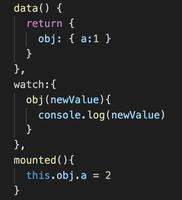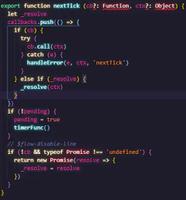使用 React 要懂的 Js特性

与我使用的其他框架相比,我最喜欢 react 的原因之一就是它对 JavaScript 的暴露程度。没有模板DSL( jsX 编译为合理的 JavaScript),组件 API 只是通过添加 React Hooks 变得更简单,并且该框架为解决的核心 UI 问题提供非常少的抽象概念。
因此,学习 JavaScript 对于使用 react 有效构建应用程序是非常可取的。所以这里有一些 JavaScript 功能,我建议你花一些时间学习,这样你就可以尽可能有效地使用 React。
模板文字
模板文字就像具有超能力的字符串:
const greeting = 'Hello'const subject = 'World'
console.log(`${greeting} ${subject}!`) // Hello World!
// this is the same as:
console.log(greeting + ' ' + subject + '!')
// in React:
function Box({className, ...props}) {
return <div className={`box ${className}`} {...props} />
}
MDN: 模板文字
简写属性名
很常见并且有用,我直到现在都没有想到可以这样做。
const a = 'hello'const b = 42
const c = {d: [true, false]}
console.log({a, b, c})
// this is the same as:
console.log({a: a, b: b, c: c})
// in React:
function Counter({initialCount, step}) {
const [count, setCount] = useCounter({initialCount, step})
return <button onClick={setCount}>{count}</button>
}
MDN: ECMAScript 2015中对象初始化的新表示法
箭头函数
箭头函数是在 JavaScript 中另一种编写函数的方法,但它们确实存在一些语义差异。幸运的是我们在 React 的土地上,如果在项目中使用hook(而不是类)就不必担心 this,但是箭头函数允许更复杂的匿名函数和隐式返回,所以你会看到并想要充分利用箭头的功能。
const getFive = () => 5const addFive = a => a + 5
const divide = (a, b) => a / b
// this is the same as:
function getFive() {
return 5
}
function addFive(a) {
return a + 5
}
function divide(a, b) {
return a / b
}
// in React:
function TeddyBearList({teddyBears}) {
return (
<ul>
{teddyBears.map(teddyBear => (
<li key={teddyBear.id}>
<span>{teddyBear.name}</span>
</li>
))}
</ul>
)
}
MDN: 箭头函数
解构
解构可能是我最喜欢的 JavaScript 功能。我一直在构造对象和数组(如果你使用 useState,可能也是如此,就像这样)。我喜欢它的陈述性。
// const obj = {x: 3.6, y: 7.8}// makeCalculation(obj)
function makeCalculation({x, y: d, z = 4}) {
return Math.floor((x + d + z) / 3)
}
/ this is the same as
function makeCalculation(obj) {
const {x, y: d, z = 4} = obj
return Math.floor((x + d + z) / 3)
}
// which is the same as
function makeCalculation(obj) {
const x = obj.x
const d = obj.y
const z = obj.z === undefined ? 4 : obj.z
return Math.floor((x + d + z) / 3)
}
// in React:
function UserGitHubImg({username = 'ghost', ...props}) {
return <img src={`https://github.com/${username}.png`} {...props} />
}
MDN: 解构分配
一等要去阅读 MDN 文章,你肯定能够学到新东西。当你完成后,尝试用单行解构:
function nestedArrayAndObject() { // refactor this to a single line of destructuring...
const info = {
title: 'Once Upon a Time',
protagonist: {
name: 'Emma Swan',
enemies: [
{name: 'Regina Mills', title: 'Evil Queen'},
{name: 'Cora Mills', title: 'Queen of Hearts'},
{name: 'Peter Pan', title: `The boy who wouldn't grow up`},
{name: 'Zelena', title: 'The Wicked Witch'},
],
},
}
// const {} = info // <-- replace the next few `const` lines with this
const title = info.title
const protagonistName = info.protagonist.name
const enemy = info.protagonist.enemies[3]
const enemyTitle = enemy.title
const enemyName = enemy.name
return `${enemyName} (${enemyTitle}) is an enemy to ${protagonistName} in "${title}"`
}
参数默认值
这是另一个我一直在用的功能:一种以声明方式表达函数默认值的非常强大的方法。
// add(1)// add(1, 2)
function add(a, b = 0) {
return a + b
}
// is the same as
const add = (a, b = 0) => a + b
// is the same as
function add(a, b) {
b = b === undefined ? 0 : b
return a + b
}
// in React:
function useLocalStorageState({
key,
initialValue,
serialize = v => v,
deserialize = v => v,
}) {
const [state, setState] = React.useState(
() => deserialize(window.localStorage.getItem(key)) || initialValue,
)
const serializedState = serialize(state)
React.useEffect(() => {
window.localStorage.setItem(key, serializedState)
}, [key, serializedState])
return [state, setState]
}
MDN: 默认参数
Rest/Spread
...语法可以被认为是一种“集合”语法,它在一组值上运行。我一直都在使用,强烈建议你也学习。它实际上在不同的环境中有不同的含义,因此学习那些细微差别会对你有所帮助。
const arr = [5, 6, 8, 4, 9]Math.max(...arr)
// is the same as
Math.max.apply(null, arr)
const obj1 = {
a: 'a from obj1',
b: 'b from obj1',
c: 'c from obj1',
d: {
e: 'e from obj1',
f: 'f from obj1',
},
}
const obj2 = {
b: 'b from obj2',
c: 'c from obj2',
d: {
g: 'g from obj2',
h: 'g from obj2',
},
}
console.log({...obj1, ...obj2})
// is the same as
console.log(Object.assign({}, obj1, obj2))
function add(first, ...rest) {
return rest.reduce((sum, next) => sum + next, first)
}
// is the same as
function add() {
const first = arguments[0]
const rest = Array.from(arguments).slice(1)
return rest.reduce((sum, next) => sum + next, first)
}
// in React:
function Box({className, ...restOfTheProps}) {
const defaultProps = {
className: `box ${className}`,
children: 'Empty box',
}
return <div {...defaultProps} {...restOfTheProps} />
}
MDN: Spread语法
MDN: Rest 参数
ESModules
如果你正在使用现代工具构建自己的程序,它应该能够支持模块,了解语法怎样工作是个好主意,因为所有的甚至微不足道的程序都可能需要使用模块来重用代码。
export default function add(a, b) { return a + b
}
/*
* import add from './add'
* console.assert(add(3, 2) === 5)
*/
export const foo = 'bar'
/*
* import {foo} from './foo'
* console.assert(foo === 'bar')
*/
export function subtract(a, b) {
return a - b
}
export const now = new Date()
/*
* import {subtract, now} from './stuff'
* console.assert(subtract(4, 2) === 2)
* console.assert(now instanceof Date)
*/
// in React:
import React, {Suspense, Fragment} from 'react'
MDN: import
MDN: export
三元表达式
我喜欢三元表达式。他们的声明很漂亮。特别是在 jsX 中。
const message = bottle.fullOfSoda ? 'The bottle has soda!'
: 'The bottle may not have soda :-('
// is the same as
let message
if (bottle.fullOfSoda) {
message = 'The bottle has soda!'
} else {
message = 'The bottle may not have soda :-('
}
// in React:
function TeddyBearList({teddyBears}) {
return (
<React.Fragment>
{teddyBears.length ? (
<ul>
{teddyBears.map(teddyBear => (
<li key={teddyBear.id}>
<span>{teddyBear.name}</span>
</li>
))}
</ul>
) : (
<div>There are no teddy bears. The sadness.</div>
)}
</React.Fragment>
)
}
我意识到,在 prettier 出现并清理我们的代码之前,一些人不得不花时间弄清楚三元运算符是怎么回事,这让三元表达式变得令人反感。如果你还没有使用 prettier,我强烈建议你这样做。prettier 将使你的三元表达式更容易阅读。
MDN: 条件(三元)运算符
数组方法
数组很棒,我一直使用数组方法!以下是我常用的方法:
- find
- some
- every
- includes
- map
- filter
- reduce
这里有些例子:
const dogs = [ {
id: 'dog-1',
name: 'Poodle',
temperament: [
'Intelligent',
'Active',
'Alert',
'Faithful',
'Trainable',
'Instinctual',
],
},
{
id: 'dog-2',
name: 'Bernese Mountain Dog',
temperament: ['Affectionate', 'Intelligent', 'Loyal', 'Faithful'],
},
{
id: 'dog-3',
name: 'Labrador Retriever',
temperament: [
'Intelligent',
'Even Tempered',
'Kind',
'Agile',
'Outgoing',
'Trusting',
'Gentle',
],
},
]
dogs.find(dog => dog.name === 'Bernese Mountain Dog')
// {id: 'dog-2', name: 'Bernese Mountain Dog', ...etc}
dogs.some(dog => dog.temperament.includes('Aggressive'))
// false
dogs.some(dog => dog.temperament.includes('Trusting'))
// true
dogs.every(dog => dog.temperament.includes('Trusting'))
// false
dogs.every(dog => dog.temperament.includes('Intelligent'))
// true
dogs.map(dog => dog.name)
// ['Poodle', 'Bernese Mountain Dog', 'Labrador Retriever']
dogs.filter(dog => dog.temperament.includes('Faithful'))
// [{id: 'dog-1', ..etc}, {id: 'dog-2', ...etc}]
dogs.reduce((allTemperaments, dog) => {
return [...allTemperaments, ...dog.temperaments]
}, [])
// [ 'Intelligent', 'Active', 'Alert', ...etc ]
// in React:
function RepositoryList({repositories, owner}) {
return (
<ul>
{repositories
.filter(repo => repo.owner === owner)
.map(repo => (
<li key={repo.id}>{repo.name}</li>
))}
</ul>
)
}
MDN: Array
广州品牌设计公司https://www.houdianzi.com PPT模板下载大全https://redbox.wode007.com
Promises 和 async/await
这是一个很大的主题,可以在它们身上多花一些时间。Promises 在 JavaScript 生态中无处不在,并且由于 React在该生态系统中的根深蒂固,它们几乎到处都是(事实上,React 本身在内部也在使用 promises)。
Promises 可帮助你管理异步代码。 Async/await 语法是处理 promises 的特殊语法。这两者是相辅相成的。
function promises() { const successfulPromise = timeout(100).then(result => `success: ${result}`)
const failingPromise = timeout(200, true).then(null, error =>
Promise.reject(`failure: ${error}`),
)
const recoveredPromise = timeout(300, true).then(null, error =>
Promise.resolve(`failed and recovered: ${error}`),
)
successfulPromise.then(log, logError)
failingPromise.then(log, logError)
recoveredPromise.then(log, logError)
}
function asyncAwaits() {
async function successfulAsyncAwait() {
const result = await timeout(100)
return `success: ${result}`
}
async function failedAsyncAwait() {
const result = await timeout(200, true)
return `failed: ${result}`
}
async function recoveredAsyncAwait() {
let result
try {
result = await timeout(300, true)
return `failed: ${result}` // this would not be executed
} catch (error) {
return `failed and recovered: ${error}`
}
}
successfulAsyncAwait().then(log, logError)
failedAsyncAwait().then(log, logError)
recoveredAsyncAwait().then(log, logError)
}
function log(...args) {
console.log(...args)
}
function logError(...args) {
console.error(...args)
}
// This is the mothership of all things asynchronous
function timeout(duration = 0, shouldReject = false) {
return new Promise((resolve, reject) => {
setTimeout(() => {
if (shouldReject) {
reject(`rejected after ${duration}ms`)
} else {
resolve(`resolved after ${duration}ms`)
}
}, duration)
})
}
// in React:
function GetGreetingForSubject({subject}) {
const [isLoading, setIsLoading] = React.useState(false)
const [error, setError] = React.useState(null)
const [greeting, setGreeting] = React.useState(null)
React.useEffect(() => {
async function fetchGreeting() {
try {
const response = await window.fetch('https://example.com/api/greeting')
const data = await response.json()
setGreeting(data.greeting)
} catch (error) {
setError(error)
} finally {
setIsLoading(false)
}
}
setIsLoading(true)
fetchGreeting()
}, [])
return isLoading ? (
'loading...'
) : error ? (
'ERROR!'
) : greeting ? (
<div>
{greeting} {subject}
</div>
) : null
}
以上是 使用 React 要懂的 Js特性 的全部内容, 来源链接: utcz.com/z/383267.html









